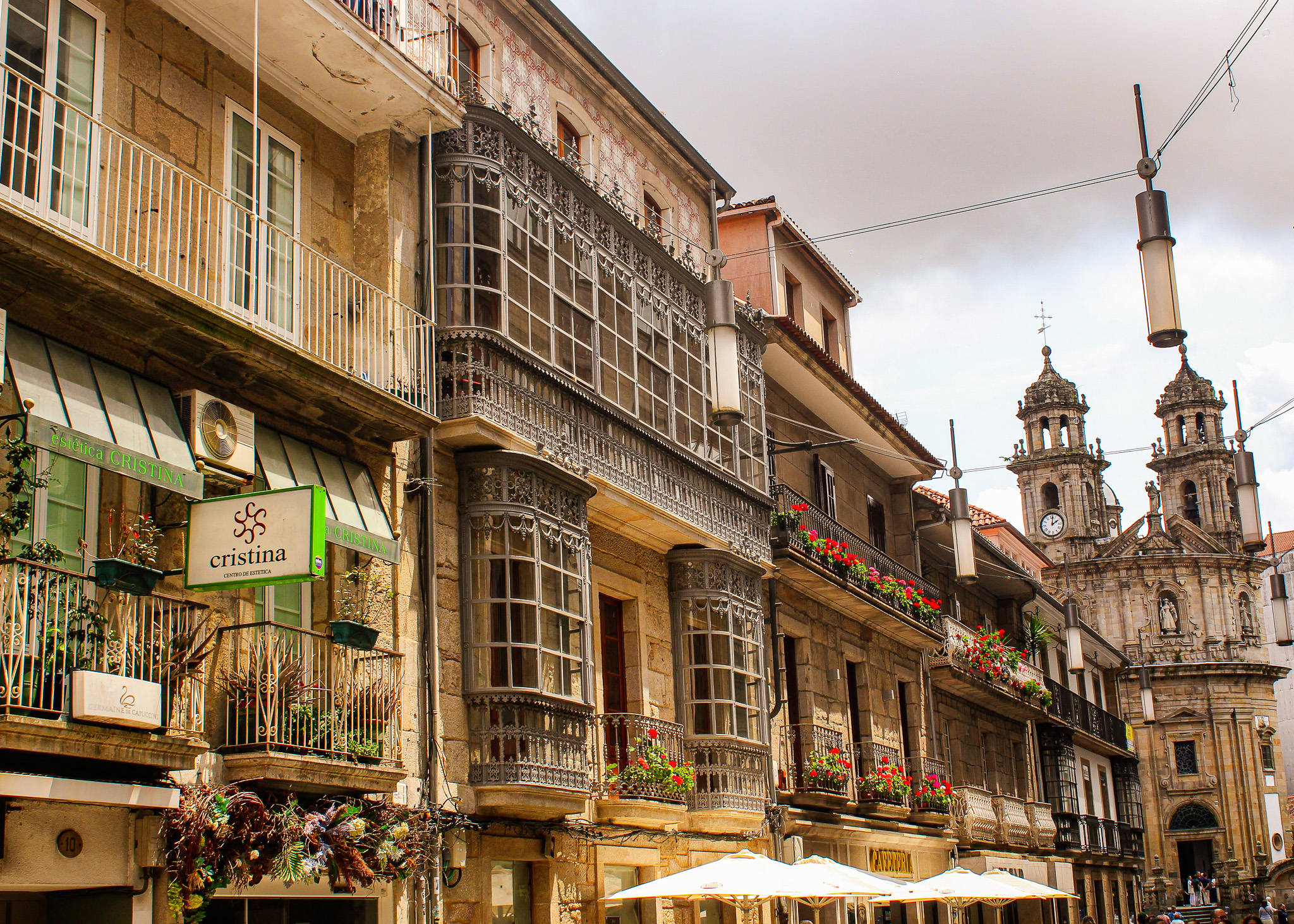Sunday is still held as a family day in Spain, shops are closed, churches are full and crowds move after mass along busy town and village centre streets to eat long leisurely lunches at restaurants or cruise tapas bars, together.
It makes a good day for driving as the road network is quiet and there is very little freight on the move. We used the overcast and drizzly morning to drive the 100kms to Pontevedra, a provincial capital established by Romans on the inland banks of the long Rio Lerez.
To reach it we crossed the wide mouth of the Vigo bay on the impressively engineered bridge, Ponte de Rande. At 1,604 meters long this cable-stayed bridge had the longest two-lane span when it opened in 1981.

The Ponte de Rande carries an estimated 50,000 vehicles daily, happily for us it was just a few cars travelling alongside as we curved across the blue waters, at a towering 148 meters above them.
Equally impressive is the originally Roman engineered bridge which established the town of Pontevedra. Local tradition likes to credit Teucro, a returning hero from the Trojan War who founded it, but in reality, it was the Romans who constructed a bridge across the Lerez and around which the town developed.
Roman bridge construction is today being studied for its reduced carbon emissions and sustainability.

Hot mixing works by adding dry quicklime (burnt limestone) to water and volcanic ash. Hydrating the quicklime triggers a chemical solution that heats and binds itself. The resulting mortar can then self-heal after cracking, including in half. By adding water to cracks the concrete will heal itself, and seawater is particularly effective meaning the endurance of so many foundations of Roman bridges, sea ports and harbours across their Empire.
Scientists are now recommending Roman concrete practice is reintroduced in a bid to lower the energy costs and carbon emissions of modern concrete, itself responsible for 8% of the world’s carbon emissions.
The 12th century stone arches of the Ponte do Burgo bridge span the Lerez on Roman foundations, stone and mortar built on top of a platform of wooden poles hammered into the riverbed to create a dry floor. It was thrilling to dawdle along the bridge’s walkway wondering who had crossed this way before.

Not surprisingly, we were in the footsteps of centuries of peregrinos, entering the town for food and shelter and to hear mass at the church of its patron saint, the Virgen de la Peregrina. The Capel da Peregrina today is unusually built to a circular plan, imitating the scallop shell and symbol of pilgrimage, with a bow-fronted façade.
Pontevedra’s medieval Old Town mixes ducal and ecclesiastical splendour with a typically Galician network of cobbled alleys, stone arcades and tiny squares.

It’s a delightful place to become lost in and we quickly found the best way to navigate our way was via its tapas bars, crowded now with chattering customers spilling outside to gather at wine barrels upended as temporary tables, or sitting together under white parasols clustered in the picturesque squares.
After six miles on foot meandering amongst Renaissance churches, austere palaces, balconied merchants’ houses, stone fountains, arcaded market places and tiny, narrow backstreets now rebirthed as gastro centres of specialist seafood restaurants, it was time to find some tapas ourselves and relax in the slowly emptying centre.
By 4pm the crowds had melted away, the army of young (and old) waiters and waitresses were efficiently clearing and packing away tables, benches, chairs and wine barrels and the lanes and squares suddenly seemed open, breezy and deserted.
We walked by ourselves back to the free parking for autocaravanas at the riverside and headed on to Poio for the early evening light.











